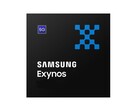A tablet like the Samsung Galaxy Tab S10 FE is a great product idea on paper. Certain nice-to-have features that are found on very expensive high-end tablets like the Samsung Galaxy Tab S10 Ultra are omitted. In return, the device is sold at a more affordable price, and everyone is happy.
Samsung is consistently following this approach with the Galaxy Tab S10 FE, which even has some advantages over the more expensive tablets. It "only" utilizes an IPS display, but it’s bright enough, has good color reproduction and doesn’t need PWM flickering at low brightness settings.
In addition, the more budget-friendly Galaxy Tab S10 FE (from $499 on Amazon) comes with good stereo speakers, a simple but well-designed aluminum chassis, and an 8,000mAh battery that provides decent battery life. An S Pen is included in the box, while other manufacturers charge extra for a stylus.
So everything’s dandy, right? Unfortunately, Samsung has also skimped on the SoC and puts an Exynos 1580 inside the Galaxy Tab S10 FE. This processor is also used in the Galaxy A56, which means that it doesn’t offer more performance than mid-range devices. Apple’s iPad Air 11 and Xiaomi Pad 7 Pro have similar price tags but sport high-end chipsets, so Samsung does not offer enough in this regard. Additionally, there are limitations such as constant stutters in some games or the lack of ray tracing support.
The fact that the Galaxy Tab S10 FE is a tablet with contrasting strengths and weaknesses is further illustrated by its 7 years of software updates and pre-installed third-party software (bloatware). Some of Samsung’s own applications cannot be deleted, even if users want to use alternative apps.
All in all, the concept behind the Galaxy Tab S10 FE doesn’t really work out. This tablet is supposed to be a “thank you” to Samsung’s loyal fanbase and a very good value, but some competing tablets are way ahead in this respect.
Please check out our comprehensive Samsung Galaxy Tab S10 FE review to find out how we came to this conclusion.























